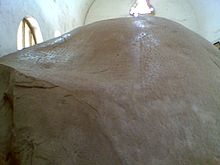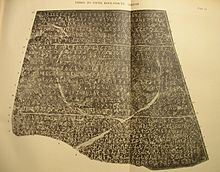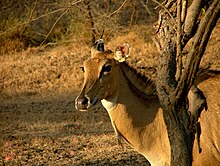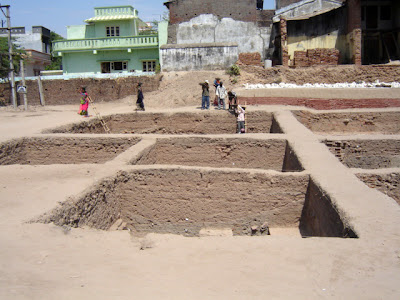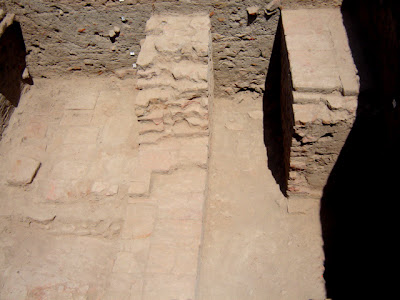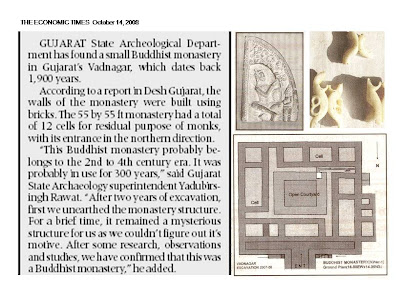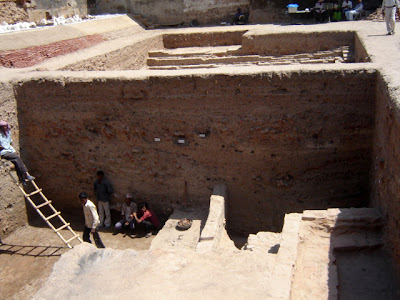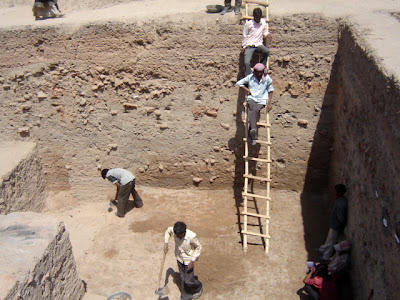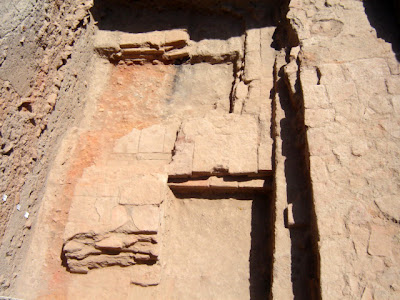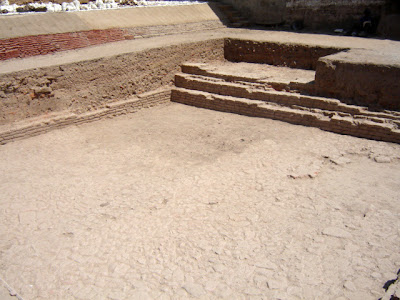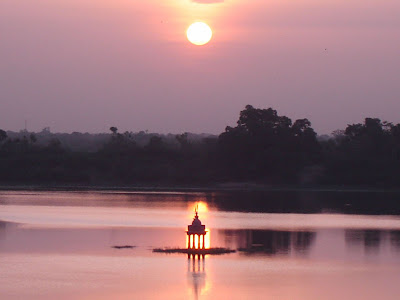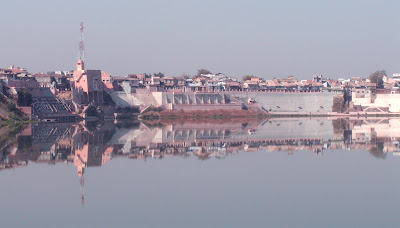1267 LESSON 17914 WEDNESDAY
There are 83 languages in
Please render exact translation in you mother tongue for these translations!
That will become a practice of Mediation as taught by the Buddha!
And become a Stream Enterer Sotapanna!
Towards Nibbana the Eternal Bliss as Final Goal!
http: sarvajan.ambedkar.org
run
FREE ONLINE E-Nālanda Research and Practice UNIVERSITY
Dear Friends,22nd September 2014, 9:30 AM to 4:30 PM
TIPITAKA in obliuisci
TIPITAKA Latviešu klasiskajā
Ashokan Rock Edicts, Junagadh
Sasan-Gir Forest National Park
National Emblem: The Lion Capital(Sasan-Gir)
50) Classical Latin
http://www.economist.com/news/international/21582287-dead-language-alive-and-kicking-online-and-airwaves-resurrexit-vere
L) obliuisci
TIPITAKA in obliuisci
Lectio MCCLXVI (XVI)CMXIV FERIA
LXXXIII linguarum sunt in
https://translate.google.com/
Quaeso te, in omnibus prorsus reddere vernacula pro ista translatione?
Quod erit mediatio, qualis ab usu Buddha!
Et factus Profusum Enterer Sotapanna!
Ad felicitatem aeternam sicut finem ultimum Nibbana!
http: sarvajan.ambedkar.org
run
Latin E-Nalanda et Research Lorem ACADEMIAE
Carissimi,
Quaeso attende in speciali progressio nomen Bada Bhante Buddharakkhita Acharya. Gratias agimus tibi.
Tua Ananda Bhante
Maha Bodhi credit,
XIV, Kalidasa Road, Gandhinagar, Bangalore - (DLX)IX
Tel: 080-22250684, Fax: 080-41148440
Email: info@mahabodhi.info, www.mahabodhi.info
22 September MMXIV, 9:30 AM 4:30 PM
In Maha Bodhi Loka Shanti Vihara Buddha, Gandhinagar, Bangalore
Uno die, et meditatio receptum Dhammapada canentis inter monachos
TITPITAKA in classical Anglorum
Usus meditatio, qualis ab Buddha
Mahāsatipaṭṭhāna Sutta
(Speculum Dhamma)
Varios hic colligit sutta mandatis dedit Buddha praeteritio post suorum causa, quae praecepta sunt nobis sit amet nunc.
Quae dicitur in tractatu de exponam Dhammādāsa Dhamma habentis ariyasāvaka quam si velit, possit de se dixit: Mihi non niraya, non-tiracchāna yoni, pettivisaya amplius non plus miseria et calamitate, et miseria sotāpanna sum natura liberi status miseriae quaedam sambodhi habitura sit.
Quid Ananda, Dhamma est quod dicitur in oratione Dhammādāsa habentis ariyasāvaka quod, si velit, possit de se dixit: Mihi non niraya, non plus, tiracchāna yoni, non plus pettivisaya non statu miseriae, calamitatis et miseriae, sotāpanna sum natura liberi status miseriae quaedam destinata sambodhi esse?
DN XXII - (ii CCXC D)
Mahāsatipaṭṭhāna Sutta
- Scentibus frequentatio -
[Maha satipaṭṭhāna +]
Hoc valde diffusam sutta secundum quod est principale secundum meditationis usu.
Note: infobubbles in omnibus verbis Pali
Pali
Uddesa
I. Kāyānupassanā
A. Ānāpāna Pabba
B. Iriyāpatha Pabba
C. Sampajāna Pabba
D. Paṭikūlamanasikāra Pabba
E. Dhātumanasikāra Pabba
F. Navasivathika Pabba
II. Vedanānupassanā
anglicus
Exordium
I. Observatione petram
A. articulo ānāpāna
B de statu,
C. articulo sampajañña
D. Aliquam in turpitudine
E. Section in Elementis
F. Section in manu Moysi, novem capita urinosa scatent
II. Observatione Vedanā
Exordium
Haec audivi:
In unum occasionem, Bhagavā Kurus at ille habitabat in Kammāsadhamma, de Kurus forum oppidum. Et respondit ad bhikkhus:
- Bhikkhus.
- Bhaddante bhikkhus respondit. In Bhagavā dixit:
- Hoc bhikkhus, nihil tamen est ad iter est purificatio entia Victoria luctus, remotionem, domanassa dukkha assecutio via Nibbāna executionem, scilicet quatuor satipaṭṭhānas.
Quod quatuor? Hic, bhikkhus, servatis a bhikkhu habitat in petram petram, ātāpī sampajāno, satimā, data nave abhijjhā domanassa-tus versus mundum. Qui habitat in vedanā vedanā servatis, ātāpī sampajāno, satimā, data nave abhijjhā domanassa-tus versus mundum. Qui habitat in Città Città servatis, ātāpī sampajāno, satimā, data nave abhijjhā domanassa-tus versus mundum. Qui habitat in Dhamma servatis Dhamma s s, ātāpī sampajāno, satimā, data nave abhijjhā domanassa-tus versus mundum.
I. Kāyānupassanā
A. articulo ānāpāna
Et quomodo, bhikkhus, servatis habitare facit bhikkhu petram in petram? Hic bhikkhus a bhikkhu profectus profectus ad silvam profectus ad radicem arboris laxamentum invicem tenens sedet pedibus decussatim, petram ponere rectus parimukhaṃ Sati et occasus. Sic delatus in Sato respirat, ita Sato spiret. Spirans in longum ipse intelligit: ego autem factus sum in respirationem diu; dum spirans et ipse intelligit: ego autem factus sum in longa terrarum ex materia; ipse intelligit, et inspiravit in brevi: ego autem factus sum in respirationem prorsus; spirans denique intelligit: ego denique terrarum ex materia; assuefaciat se: ‘omnis voluptas petram, et inspira in‘; assuefaciat se: ‘omnis voluptas petram, et exspirabit‘; assuefaciat se: saṅkhāras-aptum ad petram, et inspira in ‘; assuefaciat se: saṅkhāras-aptum ad petram, et exspirabit ‘.
Sicut bhikkhus scientem faciendum aut cauponis DISCIPULUS facientes longo tractu, intelligat: Ecce ego ponam longo tractu; brevi rursus intellegit: ego paulum vicissim; in eodem modo, bhikkhus, a bhikkhu, spirans in tempore, intellegit: ego autem factus sum in respirationem diu; dum spirans et ipse intelligit: ego autem factus sum in longa terrarum ex materia; ipse intelligit, et inspiravit in brevi: ego autem factus sum in respirationem prorsus; spirans denique intelligit: ego denique terrarum ex materia; assuefaciat se: ‘omnis voluptas petram, et inspira in‘; assuefaciat se: ‘omnis voluptas petram, et exspirabit‘; assuefaciat se: saṅkhāras-aptum ad petram, et inspira in ‘; assuefaciat se: saṅkhāras-aptum ad petram, et exspirabit ‘.
Haec manet in petram petram interius observatione, an servata manet in petram petram exterius aut observandis manet in petram kāyainternally et exterius: manet servatis samudaya phaenomenorum in petram, aut ipse animadverteret habitat in exitu ofphenomena petram, vel praeterit, et ex phaenomenis samudaya servatis manet in petram, aut, [sentientes:] “hoc est, petram?“ satiis corpore, et modo tantum quantum paṭissati Nana mere habet, Tolle, et ad ea quae in mundo adhaeret. Sic bhikkhus, servatis a bhikkhu habitat in petram petram.
B de statu,
Praeterea bhikkhus a bhikkhu, ambulans, intelligat: ego ambulans, stans aut intelligit: sto, aut intelligit sedens ‘sedeo‘, aut esset iacentibus intelligit: ego cubare ‘. Vel quocumque loco eius petram disponitur, secundum hoc intelligit.
Haec manet in petram petram interius observatione, an servata manet in petram petram exterius aut observandis manet in petram kāyainternally et exterius: manet servatis samudaya phaenomenorum in petram, aut ipse animadverteret habitat in exitu ofphenomena petram, vel praeterit, et ex phaenomenis samudaya servatis manet in petram, aut, [sentientes:] “hoc est, petram?“ satiis corpore, et modo tantum quantum paṭissati Nana mere habet, Tolle, et ad ea quae in mundo adhaeret. Sic bhikkhus, servatis a bhikkhu habitat in petram petram.
C. articulo sampajañña
Praeterea, bhikkhus, a bhikkhu, et venit ad eum, sed abeuntes cum sampajañña agit, dum adhuc longe prospiciens, et undique circumspiciens, sampajañña cum agit, sed cum inclinata et extensio, et cum ea ipsum agit sampajañña, et sumpta stola et indutus et pallio etiamsi lampadis sampajañña cum agit, comedens inter vinum dum mandendo cum gustasset, sampajañña agit, curat et defecating urinae negotium agit sampajañña cum, ambulans, stans, sedens inter dormiendum, sed vigilare, tempus tacendi et tempus loquendi, cum sampajañña agit.
Haec manet in petram petram interius observatione, an servata manet in petram petram exterius aut observandis manet in petram kāyainternally et exterius: manet servatis samudaya phaenomenorum in petram, aut ipse animadverteret habitat in exitu ofphenomena petram, vel praeterit, et ex phaenomenis samudaya servatis manet in petram, aut, [sentientes:] “hoc est, petram?“ satiis corpore, et modo tantum quantum paṭissati Nana mere habet, Tolle, et ad ea quae in mundo adhaeret. Sic bhikkhus, servatis a bhikkhu habitat in petram petram.
D. Aliquam in turpitudine
Praeterea bhikkhus est corpus bhikkhu Hunc a planta pedis usque ad caput et capilli, quae definitur impudicitiis pelle varia repletus: “In hanc petram sunt pili capitis corpus capillos, vngues, dentes, tam pelle et carnibus, tendines, ossibus medulla renibus, cor, iecur, pleura, lienis, pulmonis, intestinorum mesenterio stomachum contenta, feces, pituitam , pus, sanguinem, sudore, adipem, et in fletu, et arvina, saliva, nasi mucus, synovial fluidum et urina. “
Velut si bhikkhus erat varia repletus per duo foramina habet sacculum granum, ut puta Paddy monte, Paddy, mung fabam, et lentem, vacca, dolor seminibus husked ac dimisit. A bonum visus oculorum apud hominem, cum ea vincla relaxat, ut consideremus [continet], ‘hoc est, montanis Paddy, Paddy hoc est, illi qui sunt mung fabam, pisum-bos illos sunt, qui sunt, sesamae semina, et haec est husked rice; “Similiter, bhikkhus et ponit corpus bhikkhu a planta pedis usque ad caput et pilos, et varia repletus definitur sordes cutis “petram in nulla sunt capilli capitis pilos corporis, ungues, dentes, tam pelle et carnibus, tendines, ossibus medulla renibus, cor, iecur, pleura, lienem, pulmone, intestinis, mesenterio stomachum contenta, feces, bile, pituita, pus, sanguinem, sudore, adipem, et in fletu, et arvina, saliva, nasi mucus, synovial fluidum et urina. “
Haec manet in petram petram interius observatione, an servata manet in petram petram exterius aut observandis manet in petram kāyainternally et exterius: manet servatis samudaya phaenomenorum in petram, aut ipse animadverteret habitat in exitu ofphenomena petram, vel praeterit, et ex phaenomenis samudaya servatis manet in petram, aut, [sentientes:] “hoc est, petram?“ satiis corpore, et modo tantum quantum paṭissati Nana mere habet, Tolle, et ad ea quae in mundo adhaeret. Sic bhikkhus, servatis a bhikkhu habitat in petram petram.
E. Section in Elementis
Praeterea bhikkhus, hoc redundat in petram bhikkhu utcumque ponitur, natum est: «In hoc petram, id est terra et aqua elementum elementum ignis et aer elementa.”
Sicut bhikkhus scientem DISCIPULUS carnificem aut cædere, extinctis bovem in frusta concidens, sedebat in bivio; Similiter, bhikkhus, hoc redundat in petram bhikkhu utcumque ponitur, natum est: «In hoc petram, id est terra et aqua elementum elementum ignis et aer elementa.”
Haec manet in petram petram interius observatione, an servata manet in petram petram exterius aut observandis manet in petram kāyainternally et exterius: manet servatis samudaya phaenomenorum in petram, aut ipse animadverteret habitat in exitu ofphenomena petram, vel praeterit, et ex phaenomenis samudaya servatis manet in petram, aut, [sentientes:] “hoc est, petram?“ satiis corpore, et modo tantum quantum paṭissati Nana mere habet, Tolle, et ad ea quae in mundo adhaeret. Sic bhikkhus, servatis a bhikkhu habitat in petram petram.
F. Section in manu Moysi, novem capita urinosa scatent
(I) Praeterea bhikkhus a bhikkhu ut videret si corpus urinosa scatent in terram proieci, mortuus die nec duobus vel tribus diebus mortuus mortuus, tumidis, et caeruleum putrefactionem ipsa considerat petram “petram hoc tale est, hoc est, futurum esse, et ita non ex libero sit.“
Haec manet in petram petram interius observatione, an servata manet in petram petram exterius aut observandis manet in petram kāyainternally et exterius: manet servatis samudaya phaenomenorum in petram, aut ipse animadverteret habitat in exitu ofphenomena petram, vel praeterit, et ex phaenomenis samudaya servatis manet in petram, aut, [sentientes:] “hoc est, petram?“ satiis corpore, et modo tantum quantum paṭissati Nana mere habet, Tolle, et ad ea quae in mundo adhaeret. Sic bhikkhus, servatis a bhikkhu habitat in petram petram.
(II) Praeterea bhikkhus a bhikkhu ut videret si corpus proiiciatur urinosa scatent a terra comederent cantet comederent accipitres comederent vultures herons comederent, comederent canes comederent tigres comederent pantherae comederent entium genera ponit hanc petram “petram hoc tale est, hoc est, futurum esse, et sic non est ex libero conditionem. “
Haec manet in petram petram interius observatione, an servata manet in petram petram exterius aut observandis manet in petram kāyainternally et exterius: manet servatis samudaya phaenomenorum in petram, aut ipse animadverteret habitat in exitu ofphenomena petram, vel praeterit, et ex phaenomenis samudaya servatis manet in petram, aut, [sentientes:] “hoc est, petram?“ satiis corpore, et modo tantum quantum paṭissati Nana mere habet, Tolle, et ad ea quae in mundo adhaeret. Sic bhikkhus, servatis a bhikkhu habitat in petram petram.
(III) Praeterea bhikkhus a bhikkhu ut videret si corpus proiiciatur urinosa scatent a terra squeleton in carnem et sanguinem, tendinum contineret ponit hanc petram “hoc est petram quae talis est, ut hoc fiat, et non tantum libera est. “
Haec manet in petram petram interius observatione, an servata manet in petram petram exterius aut observandis manet in petram kāyainternally et exterius: manet servatis samudaya phaenomenorum in petram, aut ipse animadverteret habitat in exitu ofphenomena petram, vel praeterit, et ex phaenomenis samudaya servatis manet in petram, aut, [sentientes:] “hoc est, petram?“ satiis corpore, et modo tantum quantum paṭissati Nana mere habet, Tolle, et ad ea quae in mundo adhaeret. Sic bhikkhus, servatis a bhikkhu habitat in petram petram.
(IV) Praeterea bhikkhus a bhikkhu ut videret si corpus a urinosa scatent proiecerant terram a sanguine tinctam squeleton absque carne, nervis contineret ponit hanc petram “Hoc petram quae talis est, ut sic sit futurum, et ita non ex libero sit. “
Haec manet in petram petram interius observatione, an servata manet in petram petram exterius aut observandis manet in petram kāyainternally et exterius: manet servatis samudaya phaenomenorum in petram, aut ipse animadverteret habitat in exitu ofphenomena petram, vel praeterit, et ex phaenomenis samudaya servatis manet in petram, aut, [sentientes:] “hoc est, petram?“ satiis corpore, et modo tantum quantum paṭissati Nana mere habet, Tolle, et ad ea quae in mundo adhaeret. Sic bhikkhus, servatis a bhikkhu habitat in petram petram.
(V) Item bhikkhus a bhikkhu ut videret si corpus a urinosa scatent proiecerant terram, et non caro et sanguis squeleton, tendines contineret ponit hanc petram “hoc est petram quae talis est, ut hoc fiat, et non tantum libera est. “
Haec manet in petram petram interius observatione, an servata manet in petram petram exterius aut observandis manet in petram kāyainternally et exterius: manet servatis samudaya phaenomenorum in petram, aut ipse animadverteret habitat in exitu ofphenomena petram, vel praeterit, et ex phaenomenis samudaya servatis manet in petram, aut, [sentientes:] “hoc est, petram?“ satiis corpore, et modo tantum quantum paṭissati Nana mere habet, Tolle, et ad ea quae in mundo adhaeret. Sic bhikkhus, servatis a bhikkhu habitat in petram petram.
(VI) Praeterea bhikkhus a bhikkhu ut videret si corpus proiiciatur urinosa scatent a solo sparsa passim ossa, os, manus huc illuc os pedem, TALUS hic est a crure, hic est femur os, et ibi a coxendicis osse, hic a latere, a tergo sunt, os, quod hic a spina dorsi ossa non a cervice, hic in maxilla asini, et dentem os illius, vel in cerebro, ibi, esse existimat, hanc petram “petram hoc tale est, hoc est, futurum esse, et ita non ex libero sit.“
Haec manet in petram petram interius observatione, an servata manet in petram petram exterius aut observandis manet in petram kāyainternally et exterius: manet servatis samudaya phaenomenorum in petram, aut ipse animadverteret habitat in exitu ofphenomena petram, vel praeterit, et ex phaenomenis samudaya servatis manet in petram, aut, [sentientes:] “hoc est, petram?“ satiis corpore, et modo tantum quantum paṭissati Nana mere habet, Tolle, et ad ea quae in mundo adhaeret. Sic bhikkhus, servatis a bhikkhu habitat in petram petram.
(VII) Praeterea bhikkhus a bhikkhu ut videret si corpus urinosa scatent in terram proieci, quasi dealbata seashell ossa ponit hanc petram “etiam hic talis est, petram, similis factus est ad hoc, et talis est non caret. “
Haec manet in petram petram interius observatione, an servata manet in petram petram exterius aut observandis manet in petram kāyainternally et exterius: manet servatis samudaya phaenomenorum in petram, aut ipse animadverteret habitat in exitu ofphenomena petram, vel praeterit, et ex phaenomenis samudaya servatis manet in petram, aut, [sentientes:] “hoc est, petram?“ satiis corpore, et modo tantum quantum paṭissati Nana mere habet, Tolle, et ad ea quae in mundo adhaeret. Sic bhikkhus, servatis a bhikkhu habitat in petram petram.
(VIII) Praeterea bhikkhus a bhikkhu ut videret si corpus urinosa scatent in terram proieci congesta super ossa anniculos hanc petram censeat: “Hic est talis petram quod factum est ad hoc, et talis est non caret. “
Haec manet in petram petram interius observatione, an servata manet in petram petram exterius aut observandis manet in petram kāyainternally et exterius: manet servatis samudaya phaenomenorum in petram, aut ipse animadverteret habitat in exitu ofphenomena petram, vel praeterit, et ex phaenomenis samudaya servatis manet in petram, aut, [sentientes:] “hoc est, petram?“ satiis corpore, et modo tantum quantum paṭissati Nana mere habet, Tolle, et ad ea quae in mundo adhaeret. Sic bhikkhus, servatis a bhikkhu habitat in petram petram.
(IX) Praeterea bhikkhus a bhikkhu ut videret si corpus proiiciatur urinosa scatent a terra in pulverem ossa putrida ponit hanc petram “etiam hic talis est, petram eam similis factus est ad hoc, et talis est non caret. “
Haec manet in petram petram interius observatione, an servata manet in petram petram exterius aut observandis manet in petram kāyainternally et exterius: manet servatis samudaya phaenomenorum in petram, aut ipse animadverteret habitat in exitu ofphenomena petram, vel praeterit, et ex phaenomenis samudaya servatis manet in petram, aut, [sentientes:] “hoc est, petram?“ satiis corpore, et modo tantum quantum paṭissati Nana mere habet, Tolle, et ad ea quae in mundo adhaeret. Sic bhikkhus, servatis a bhikkhu habitat in petram petram.
II. Observatione Vedanā
Et quomodo nunc, bhikkhus, servatis tamen a bhikkhu habitant in vedanā vedanā?
Hic, bhikkhus, a bhikkhu usus sukha vedanā, undersands: “Ego sum expertus sukha vedanā“; expertus dukkha vedanā, undersands: “Ego sum expertus dukkha vedanā“; experiendo, adukkham asukhā vedanā, undersands: “expertus sum, aadukkham asukhā vedanā“; expertus sukha vedanā sāmisa, undersands: “Ego sum expertus sukha vedanā sāmisa“; expertus sukha vedanā nirāmisa, undersands: “Ego sum expertus sukha vedanā nirāmisa“; expertus dukkha vedanā sāmisa, undersands: “Ego sum expertus dukkha vedanā sāmisa“; expertus dukkha vedanā nirāmisa, undersands: “Ego sum expertus dukkha vedanānirāmisa“; experiendo, adukkham asukhā vedanā sāmisa, undersands: “expertus sum, adukkham asukhā vedanā sāmisa“; experiendo, adukkham asukhā vedanā nirāmisa, undersands: “expertus sum, adukkham asukhā vedanā nirāmisa“.
Haec manet in servatis vedanā vedanā interius, vel ad extra manet servatis vedanā in vedanā, vel manet vedanāin vedanā servatis quoad internum et externum; Qui habitat in vedanā servatis samudaya phaenomenorum aut ipse animadverteret habitat in transitu animalium et vedanā, vel habitationem, et servatis samudaya transitu animalium et vedanā; aut, [sentientes:] “hoc isvedanā!“ Sati ei adsit, et tantum, quantum ipsa sola paṭissati Nana habet, Tolle, et ad ea quae in mundo adhaeret. Sic bhikkhus, a bhikkhu habitat in vedanā vedanā servatis.
Note
1 ‘atthi kāyo‘ ti V · rem fore pan Sati paccupaṭṭhitā hoti, Nana yāvadeva · · mattāya paṭissati mattāya: hoc est forsit trickiest parte sutta. Quia gravissima, iterari super XX temporibus, et quoque ex eo quod est actu pars praecipua Sati explicanda efficitur. Here es pauci appellationes alternis:
Uri “Constat autem sensum:« Hoc est corpus »suum excolit, ita ad sensum tantum, ita quod, cum intellectus sit ipsa conscientia.”
Analayo Bhante “Memoriam aut quod corpus est, et confirmatur in eo scientia est ad memoriam, quantum illud”
Bhikkhu Thanissaro “memoriam aut eius quod est corpus, & tenendum memoria scientiarum quatenus“
Bhikkhu Nanamoli & Bhikkhu Bodhi: “Aut Memoriam quia non est corpus, nihil aliud est quam in externo, nam secundum quod requirit scientia est et memoriam.“
Theram Nyanasatta “An constet memoriam sententiae illius” Corpus est, “modo ad scientiam atque memoriam, quatenus opus.”
Theram Soma “An constet Memoriam quidem cogitatio: caro est, quia modo, cognitione et recordatione opus est, quantum“
Mauricius Walshe “Aut memoriam quod ‘corpus est“ necessarium est quantum ad praesens et scientiam.’
Translation rationibus, magistri retis,
consentientibus Thanissaro Bhikkhu translatum.
— Milia —
Published donum Dhamma, gratis distribui.
In quibus exemplar libri, de hoc ipso an derivata originem debet afferre.
Commodo:
https://www.youtube.com/watch?v=wV0nJtlswqg
Sathipattana Suthraya Maha - මහා සතිපට්ඨාන සුත්රය -1: IX: LIX Hr
Uploaded on Aug XIII, MMXI
Maha Sathipattana Sutta decantavit Ven. Dr Omalpe Sobhita thie
https://www.youtube.com/watch?v=ixu4Kd5R1DI&list=PL_hbXduIzfZbVhHr8nQEMCsceg0mHsxJa
Meditatio Vipassana et corpus sensum: at Eilona Ariel TEDxJaffa MMXIII
Cuius opus est litterarum filmmaker Eilona Ariel multum inspirata consentaneas vitae suae in Asia et praxi antiquorum Vipassana artis excogitatio dicitur.
Novi Eboraci in MCMLXXVIII Commotis ac studencium et operantes sicut musicum et consumpta novem annis pretium. In MCMLXXX, a sororibus accepisset, accepit Germani schola diploma a mauris. Cumque illa pergeret ut USA in MCMLXXXVII, aliquot annos in Asia. In MCMXCV, reversa est ad Israel et firmavit Karuna Films Lorem ipsum dolor sit cum Ayelet Menahemi.
In spiritu ideas valet ac serpit, opus est ratione locorum ducibus, per se ordinantur ad illud quod populus simul experientiae ad participes a TED-sicut. In ducibus, id est, et vivet TEDTalks video loquentium miscere altum sermo scintillae in nexu et in quandam. Horum autem, per se ordinata sunt et notata, res ducibus, ubi x = TED eventus verat per se. Ted conferentia statutis cautum sit in genere morum, ducibus, Quod singulis ducibus, quae sunt per se ordinata rerum. * (* Subiectum est aliqua praecepta vel statuta)
Ut enim ad minim Vipassana, videatur http://www.dhamma.org
Plura de faciant tempore, at quod facere Vipassana & Karuna Films http://www.karunafilms.com
Nam loquitur de hac re ad http://www.tedxjaffa.com
https://www.youtube.com/watch?v=1Ii9vjW9BwU&index=6&list=PL_hbXduIzfZbVhHr8nQEMCsceg0mHsxJa
Meditatio Vipassana S. N. Goenka - I diem
https://www.youtube.com/watch?v=VFrp9ROB44c&feature=pyv&ad=4869139754&kw=meditation%20mindfulness
Tui vis, subconscious mentis acheive velle quicquam est (www.MindMaster.TV)
Curabitur lobortis http://mindmaster.tv/success.html uti potestate mentis acheive velle quicquam est. Worldwide Success Stories probatisque elit. Aliquam erat volutpat Top X, medicinae doctores et carrucis. Gratias tibi placet nostro Doctori Deepak Chopra enim Fan Page:
50) Classical Latvian
http://www.routledge.com/languages/latvian/
Language Learning
Latvian
50) Klasiskā Latvijā
TIPITAKA Latviešu klasiskajā
1266 Nodarbība 16914 otrdiena
Ir 83 valodas
https://translate.google.com/
Lūdzu sniegt precīzu tulkojumu jums dzimtajā valodā par šiem tulkojumiem!
Tas kļūs prakse Mediācija kā mācīja Buda!
Un kļūt par Stream Ievadītāja Sotapanna!
Ceļā Nibbana Mūžīgā Bliss kā galamērķi!
http: sarvajan.ambedkar.org
palaist
FREE ONLINE E-Nalanda Research and Practice UNIVERSITĀTE
Dārgie draugi,
Lūdzu apmeklēt īpašo programmu ar nosaukumu Bada Bhante Acharya Buddharakkhita. Paldies.
Yours Ananda Bhante
MAHA Bodhi SOCIETY,
14, Kalidasa Road, Gandhinagar, Bangalore - 560009
Tel: 080-22250684, Fakss: 080-41148440
E-pasts: info@mahabodhi.info, www.mahabodhi.info
Sep 22, 2014, 9:30-4:30
Pie Maha Bodhi Loka Shanti Buddha Vihara, Gandhinagar, Bangalore
One-Day Meditācija Retreat un Dhammapada dziesmām mūki
TITPITAKA klasiskajā angļu valodā
Prakse Meditācija kā Māca Budas
Mahāsatipaṭṭhāna Sutta
(Mirror of Dhammu)
Šis Sutta apkopo dažādus norādījumus Buda deva labad viņa sekotājiem pēc viņa iet prom, kas padara to par ļoti svarīgs instrukciju kopums mums mūsdienās.
Es skaidrot diskursu uz Dhamma ko sauc Dhammādāsa, piederēja kuru ariyasāvaka, ja viņš to vēlas, var paziņot par sevi: “Man vairs nav niraya, ne vairāk tiracchāna-joni, ne vairāk pettivisaya, nē vairāk valsts nelaime, par nelaimi, postu, es esmu sotāpanna, pēc būtības, kas brīva no valstīm posta, dažu tikt lemts sambodhi.
Un ko, Ānanda, ir tas, ka diskurss par Dhamma ko sauc Dhammādāsa, piederēja kuru ariyasāvaka, ja viņš to vēlas, var paziņot par sevi: “Man vairs nav niraya, ne vairāk tiracchāna-joni, ne vairāk pettivisaya, ne vairāk valsts nelaime, par nelaimi, postu, es esmu sotāpanna, pēc būtības bez valstis posta, dažiem ir lemts sambodhi?
DN 22 - (D ii 290)
Mahāsatipaṭṭhāna Sutta
- Apmeklējums par informētības -
[Mahā + satipaṭṭhāna]
Šis Sutta tiek plaši uzskatīta par galveno atsauci meditācijas praksi.
Piezīme: infobubbles visās Pali vārdiem
Pali
Uddesa
I. Kāyānupassanā
A. Ānāpāna Pabba
B. Iriyāpatha Pabba
C. Sampajāna Pabba
D. Paṭikūlamanasikāra Pabba
E. Dhātumanasikāra Pabba
F. Navasivathika Pabba
II. Vedanānupassanā
angļu
Ievads
I. novērošana Kaya
A. sadaļa par ānāpāna
B. sadaļa par pozas
C. sadaļa par sampajañña
D. sadaļa par repulsiveness
E. iedaļa par elementi
F. sadaļa par deviņiem Apbedīšanas iemesliem
II. Novērošana Vedanā
Ievads
Tādējādi es esmu dzirdējis:
Vienā gadījumā, Bhagavā atradās starp Kurus pie Kammāsadhamma, tirgus pilsēta ar Kurus. Tur viņš pievērsās bhikkhus:
- Bhikkhus.
- Bhaddante atbildēja bhikkhus.Bhagavā teica:
- Tas, bhikkhus, ir ceļš, kas ved uz neko, bet attīrīšanas būtnēm, pārvarēšanu skumjām un bēdām, izzušana dukkha-domanassa, sasniegšana pareizā veidā, realizācija Nibbana, proti, četriem satipaṭṭhānas.
Kuriem četri? Lūk, bhikkhus, bhikkhu mājo vērojot Kaya in Kaya, ATAPI sampajāno, satimā, dodot līdz abhijjhā-domanassa pret pasauli. Viņš mājo ievērojot vedanā in vedanā, ATAPI sampajāno, satimā, dodot līdz abhijjhā-domanassa pret pasauli. Viņš mājo ievērojot Citta in Citta, ATAPI sampajāno, satimā, dodot līdz abhijjhā-domanassa pret pasauli. Viņš mājo vērojot Dhammu · s in Dhamma · s, ATAPI sampajāno, satimā, dodot līdz abhijjhā-domanassa pret pasauli.
I. Kāyānupassanā
A. sadaļa par ānāpāna
Un kā, bhikkhus, tas bhikkhu mājot vērojot Kaya in Kaya? Lūk, bhikkhus, bhikkhu, kam devusies uz mežu vai ir devusies pie saknes koka vai kas devusies uz tukšā telpā, apsēžas locīšanas kājas krusteniski, nosakot Kaya stāvus, un nosakot SATI parimukhaṃ. Būt tādējādi sato viņš ieelpo, tādējādi ir sato viņš izelpo. Elpošanas ilgi viņš saprot: “Es esmu elpošana ilgi ‘; izelpas laikā ilgi viņš saprot: “Es esmu elpošana out garš ‘; elpošanas Short viņš saprot: “Es esmu elpošana Īsumā ‘; izelpas laikā īsu, viņš saprot: “Es esmu izelpas laikā īsa ‘; viņš trenē sevi: “sajūta visu Kaya, es elpot“; viņš trenē sevi: “sajūta visu Kaya, es elpot out ‘; viņš trenē sevi: “nomierinoša nosaka Kaya-saṅkhāras, es elpot“; viņš trenē sevi: “nomierinoša leju Kaya-saṅkhāras, es elpot out“.
Tāpat kā, bhikkhus, izveicīgs virpotājs vai kādas Tērnera māceklis, padarot garu pagriezienu, saprot: “Es esmu padarot garu pagriezienu ‘; padarot īsu pagriezienu, viņš saprot: “Es esmu padarot īsu pagriezienu ‘; tādā pašā veidā, bhikkhus, bhikkhu, elpošana garš, saprot: “Es esmu elpošana ilgi ‘; izelpas laikā ilgi viņš saprot: “Es esmu elpošana out garš ‘; elpošanas Short viņš saprot: “Es esmu elpošana Īsumā ‘; izelpas laikā īsu, viņš saprot: “Es esmu izelpas laikā īsa ‘; viņš trenē sevi: “sajūta visu Kaya, es elpot“; viņš trenē sevi: “sajūta visu Kaya, es elpot out ‘; viņš trenē sevi: “nomierinoša nosaka Kaya-saṅkhāras, es elpot“; viņš trenē sevi: “nomierinoša leju Kaya-saṅkhāras, es elpot out“.
Tādējādi viņš mājo vērojot Kaya in Kaya iekšēji, vai arī viņš mājo vērojot Kaya in Kaya ārēji, vai viņš mājo vērojot Kaya in kāyainternally un ārēji; viņš mājo ievērojot samudaya parādību ar Kaya, vai viņš mājo vērojot iet prom ofphenomena in Kaya, vai viņš mājo vērojot samudaya un iet prom parādību Kaya; vai kas cits, [realizējot:] “šis ir Kaya!“ satiis klāt viņam, tikai tik lielā mērā, tikai Nana un tikai paṭissati, viņš mājo atdalīts, un nav pielipis kaut pasaulē. Tādējādi, bhikkhus, bhikkhu mājo vērojot Kaya in Kaya.
B. sadaļa par pozas
Turklāt, bhikkhus, bhikkhu, staigājot, saprot: “Es eju“, vai stāvot, viņš saprot: “Es stāvu“, vai sēžot, viņš saprot: “Es sēžu“, vai guļus, viņš saprot: ‘Es esmu guļus “. Vai arī, jebkādā amats viņa Kaya tiek apglabāti, viņš saprot to attiecīgi.
Tādējādi viņš mājo vērojot Kaya in Kaya iekšēji, vai arī viņš mājo vērojot Kaya in Kaya ārēji, vai viņš mājo vērojot Kaya in kāyainternally un ārēji; viņš mājo ievērojot samudaya parādību ar Kaya, vai viņš mājo vērojot iet prom ofphenomena in Kaya, vai viņš mājo vērojot samudaya un iet prom parādību Kaya; vai kas cits, [realizējot:] “šis ir Kaya!“ satiis klāt viņam, tikai tik lielā mērā, tikai Nana un tikai paṭissati, viņš mājo atdalīts, un nav pielipis kaut pasaulē. Tādējādi, bhikkhus, bhikkhu mājo vērojot Kaya in Kaya.
C. sadaļa par sampajañña
Turklāt bhikkhus, bhikkhu, bet tuvojas, un, kamēr izlido, rīkojas ar sampajañña, skatoties uz priekšu un, skatoties apkārt, viņš darbojas ar sampajañña, bet locīšana un bet stiepjas, viņš rīkojas ar sampajañña, kamēr valkā drēbes un augšējo drēbes un vienlaikus veicot bļodu, viņš darbojas ar sampajañña, ēdot, dzerot, bet košļājamā, bet degustācija, viņš rīkojas ar sampajañña, vienlaikus apmeklējot uzņēmējdarbībai izkārnīšanos un urinēšana, viņš rīkojas ar sampajañña, staigājot, stāvot, sēžot , kamēr guļ, bet ir nomodā, bet runā un būdams kluss, viņš darbojas ar sampajañña.
Tādējādi viņš mājo vērojot Kaya in Kaya iekšēji, vai arī viņš mājo vērojot Kaya in Kaya ārēji, vai viņš mājo vērojot Kaya in kāyainternally un ārēji; viņš mājo ievērojot samudaya parādību ar Kaya, vai viņš mājo vērojot iet prom ofphenomena in Kaya, vai viņš mājo vērojot samudaya un iet prom parādību Kaya; vai kas cits, [realizējot:] “šis ir Kaya!“ satiis klāt viņam, tikai tik lielā mērā, tikai Nana un tikai paṭissati, viņš mājo atdalīts, un nav pielipis kaut pasaulē. Tādējādi, bhikkhus, bhikkhu mājo vērojot Kaya in Kaya.
D. sadaļa par Repulsiveness
Turklāt, bhikkhus, bhikkhu uzskata, ka šī ļoti ķermeni, no pēdām uz augšu un no matiem uz galvas uz leju, kas norobežo tā āda un pilna dažādu piemaisījumu: “Šajā Kaya, ir matiņi no galvas, mati uz ķermeņa, nagi, zobi, āda, miesa, cīpslas, kauli, kaulu smadzenes, nieres, sirdi, aknas, pleiras, liesas, plaušas, zarnas, apzarnis, kuņģa ar savu saturu, fekālijām, žults, krēpām , strutas, asinis, sviedri, tauki, asaras, tauki, siekalas, deguna gļotas, sinoviālā šķidruma un urīna. “
Tāpat kā, ja, bhikkhus, tur bija soma ar divas atveres un piepildīta ar dažāda veida graudu, piemēram, kalna nelobītu, Paddy, mung pupiņas, govs zirņi, sezama sēklas un lobītiem rīsiem.Cilvēks ar labu redzi, kam neaizsprādzētām tas būtu jāapsver [tās saturu]: “Tas ir kalns-nelobīti, tas ir rīss, šie ir mung pupiņas, tie ir govs-zirņi, tie ir sezama sēklas, un tas ir lobītu rīsus;“ tādā pašā veidā, bhikkhus, bhikkhu uzskata, ka šī ļoti ķermeni, no pēdām uz augšu un no matiem uz galvas uz leju, kas norobežo savu ādu un pilna dažādu piemaisījumu: “Šajā Kaya, tur ir mati uz galvas, mati uz ķermeņa, nagiem, zobiem, ādas, mīkstumu, cīpslas, kauli, kaulu smadzenes, nieres, sirdi, aknas, pleiras, liesā, plaušās, zarnu, apzarņa, kuņģa ar tās saturu, fekālijām, žults, flegma, strutas, asinis, sviedri, tauki, asaras, tauki, siekalas, deguna gļotas, sinoviālā šķidruma un urīna. “
Tādējādi viņš mājo vērojot Kaya in Kaya iekšēji, vai arī viņš mājo vērojot Kaya in Kaya ārēji, vai viņš mājo vērojot Kaya in kāyainternally un ārēji; viņš mājo ievērojot samudaya parādību ar Kaya, vai viņš mājo vērojot iet prom ofphenomena in Kaya, vai viņš mājo vērojot samudaya un iet prom parādību Kaya; vai kas cits, [realizējot:] “šis ir Kaya!“ satiis klāt viņam, tikai tik lielā mērā, tikai Nana un tikai paṭissati, viņš mājo atdalīts, un nav pielipis kaut pasaulē. Tādējādi, bhikkhus, bhikkhu mājo vērojot Kaya in Kaya.
E. iedaļa par elementi
Turklāt, bhikkhus, bhikkhu pārdomās par šo ļoti Kaya, tomēr tas ir ievietots, taču tā tiek apglabāti: “. Šajā Kaya, ir zemes elements, ūdens elements, uguns elements un gaisa elements“
Tāpat kā, bhikkhus, izveicīgs miesnieks vai miesnieks māceklis, kam nogalināja govs, varētu sēdēt krustcelēs griešanas gabalos; tādā pašā veidā, bhikkhus, bhikkhu liecina par to ļoti Kaya, tomēr tas ir ievietots, tomēr tas ir izvietota: “Šajā Kaya, ir zemes elements, ūdens elements, uguns elements un gaisa elements.“
Tādējādi viņš mājo vērojot Kaya in Kaya iekšēji, vai arī viņš mājo vērojot Kaya in Kaya ārēji, vai viņš mājo vērojot Kaya in kāyainternally un ārēji; viņš mājo ievērojot samudaya parādību ar Kaya, vai viņš mājo vērojot iet prom ofphenomena in Kaya, vai viņš mājo vērojot samudaya un iet prom parādību Kaya; vai kas cits, [realizējot:] “šis ir Kaya!“ satiis klāt viņam, tikai tik lielā mērā, tikai Nana un tikai paṭissati, viņš mājo atdalīts, un nav pielipis kaut pasaulē. Tādējādi, bhikkhus, bhikkhu mājo vērojot Kaya in Kaya.
F. sadaļa par deviņiem Apbedīšanas iemesliem
(1) Turklāt, bhikkhus, bhikkhu, tāpat kā tad, ja viņš bija redzēt līķi, lietie prom kapliča zemē, vienu dienu miris, vai divas dienas miruši vai trīs dienām miris, pietūkušas, zilgana un gruzd, viņš uzskata, ka tas ir ļoti Kaya: “Šis Kaya arī ir tāds raksturs, tas kļūs, piemēram, tas, un nav brīva no šāda nosacījuma.“
Tādējādi viņš mājo vērojot Kaya in Kaya iekšēji, vai arī viņš mājo vērojot Kaya in Kaya ārēji, vai viņš mājo vērojot Kaya in kāyainternally un ārēji; viņš mājo ievērojot samudaya parādību ar Kaya, vai viņš mājo vērojot iet prom ofphenomena in Kaya, vai viņš mājo vērojot samudaya un iet prom parādību Kaya; vai kas cits, [realizējot:] “šis ir Kaya!“ satiis klāt viņam, tikai tik lielā mērā, tikai Nana un tikai paṭissati, viņš mājo atdalīts, un nav pielipis kaut pasaulē. Tādējādi, bhikkhus, bhikkhu mājo vērojot Kaya in Kaya.
(2) Turklāt, bhikkhus, bhikkhu, tāpat kā tad, ja viņš bija redzēt līķi, lietie prom kapliča zemē, ko ēst, ko dziedās, apēd vanagi, apēd liju, apēd zivju gārņi, apēd suņiem, apēd tīģeri, apēd panthers, apēd dažādu būtņu, viņš uzskata, ka tas ir ļoti Kaya: “Šis Kaya arī ir tāds raksturs, tas kļūs, piemēram, tas, un nav brīva no tādiemnosacījums. “
Tādējādi viņš mājo vērojot Kaya in Kaya iekšēji, vai arī viņš mājo vērojot Kaya in Kaya ārēji, vai viņš mājo vērojot Kaya in kāyainternally un ārēji; viņš mājo ievērojot samudaya parādību ar Kaya, vai viņš mājo vērojot iet prom ofphenomena in Kaya, vai viņš mājo vērojot samudaya un iet prom parādību Kaya; vai kas cits, [realizējot:] “šis ir Kaya!“ satiis klāt viņam, tikai tik lielā mērā, tikai Nana un tikai paṭissati, viņš mājo atdalīts, un nav pielipis kaut pasaulē. Tādējādi, bhikkhus, bhikkhu mājo vērojot Kaya in Kaya.
(3) Turklāt, bhikkhus, bhikkhu, tāpat kā tad, ja viņš bija redzēt līķi, lietie prom kapliča zemē, squeleton ar miesu un asinīm, kas notika kopā ar cīpslām, viņš uzskata, ka tas ir ļoti Kaya: “Šis Kaya ir arī tāda rakstura, tas kļūs, piemēram, tas, un nav brīva no šāda nosacījuma. “
Tādējādi viņš mājo vērojot Kaya in Kaya iekšēji, vai arī viņš mājo vērojot Kaya in Kaya ārēji, vai viņš mājo vērojot Kaya in kāyainternally un ārēji; viņš mājo ievērojot samudaya parādību ar Kaya, vai viņš mājo vērojot iet prom ofphenomena in Kaya, vai viņš mājo vērojot samudaya un iet prom parādību Kaya; vai kas cits, [realizējot:] “šis ir Kaya!“ satiis klāt viņam, tikai tik lielā mērā, tikai Nana un tikai paṭissati, viņš mājo atdalīts, un nav pielipis kaut pasaulē. Tādējādi, bhikkhus, bhikkhu mājo vērojot Kaya in Kaya.
(4) Turklāt, bhikkhus, bhikkhu, tāpat kā tad, ja viņš bija redzēt līķi, lietie prom kapliča zemē, kas squeleton bez miesas un smeared ar asinīm, kas notika kopā ar cīpslām, viņš uzskata, ka šis ir ļoti Kaya: “Šis Kaya arī ir tāds raksturs, tas kļūs, piemēram, tas, un nav brīva no šāda nosacījuma. “
Tādējādi viņš mājo vērojot Kaya in Kaya iekšēji, vai arī viņš mājo vērojot Kaya in Kaya ārēji, vai viņš mājo vērojot Kaya in kāyainternally un ārēji; viņš mājo ievērojot samudaya parādību ar Kaya, vai viņš mājo vērojot iet prom ofphenomena in Kaya, vai viņš mājo vērojot samudaya un iet prom parādību Kaya; vai kas cits, [realizējot:] “šis ir Kaya!“ satiis klāt viņam, tikai tik lielā mērā, tikai Nana un tikai paṭissati, viņš mājo atdalīts, un nav pielipis kaut pasaulē. Tādējādi, bhikkhus, bhikkhu mājo vērojot Kaya in Kaya.
(5) Turklāt, bhikkhus, bhikkhu, tāpat kā tad, ja viņš bija redzēt līķi, lietie prom kapliča zemē, squeleton bez miesas, ne asinīm, kas notika kopā ar cīpslām, viņš uzskata, ka tas ir ļoti Kaya: “Šis Kaya ir arī tāda rakstura, tas kļūs, piemēram, tas, un nav brīva no šāda nosacījuma. “
Tādējādi viņš mājo vērojot Kaya in Kaya iekšēji, vai arī viņš mājo vērojot Kaya in Kaya ārēji, vai viņš mājo vērojot Kaya in kāyainternally un ārēji; viņš mājo ievērojot samudaya parādību ar Kaya, vai viņš mājo vērojot iet prom ofphenomena in Kaya, vai viņš mājo vērojot samudaya un iet prom parādību Kaya; vai kas cits, [realizējot:] “šis ir Kaya!“ satiis klāt viņam, tikai tik lielā mērā, tikai Nana un tikai paṭissati, viņš mājo atdalīts, un nav pielipis kaut pasaulē. Tādējādi, bhikkhus, bhikkhu mājo vērojot Kaya in Kaya.
(6) Turklāt, bhikkhus, bhikkhu, tāpat kā tad, ja viņš bija redzēt līķi, lietie prom kapliča zemē, atvienots kauli izkaisīti šeit un tur, šeit rokas kaulu, tur pēdas kaulu, šeit potītes kauls, turapakšstilba kaulu, šeit augšstilba kaulu, tur gūžas kaulu, šeit ribas, tur muguras kaulu, šeit mugurkaula kaulu, tur kakla kaulu, šeit žokļa kauls, tur zobu kaulu, vai tur galvaskauss, viņš uzskata, ka šis ļoti Kaya: “Šis Kaya arī ir tāds raksturs, tas kļūs, piemēram, tas, un nav brīva no šāda nosacījuma.“
Tādējādi viņš mājo vērojot Kaya in Kaya iekšēji, vai arī viņš mājo vērojot Kaya in Kaya ārēji, vai viņš mājo vērojot Kaya in kāyainternally un ārēji; viņš mājo ievērojot samudaya parādību ar Kaya, vai viņš mājo vērojot iet prom ofphenomena in Kaya, vai viņš mājo vērojot samudaya un iet prom parādību Kaya; vai kas cits, [realizējot:] “šis ir Kaya!“ satiis klāt viņam, tikai tik lielā mērā, tikai Nana un tikai paṭissati, viņš mājo atdalīts, un nav pielipis kaut pasaulē. Tādējādi, bhikkhus, bhikkhu mājo vērojot Kaya in Kaya.
(7) Turklāt, bhikkhus, bhikkhu, tāpat kā tad, ja viņš bija redzēt līķi, lietie prom kapliča zemē, kauli balti kā jūras gliemežvāku, viņš uzskata, ka tas ir ļoti Kaya: “Šis Kaya arī ir tāds raksturs, tā gatavojas kļūt, piemēram, tas, un nav brīva no šāda nosacījuma. “
Tādējādi viņš mājo vērojot Kaya in Kaya iekšēji, vai arī viņš mājo vērojot Kaya in Kaya ārēji, vai viņš mājo vērojot Kaya in kāyainternally un ārēji; viņš mājo ievērojot samudaya parādību ar Kaya, vai viņš mājo vērojot iet prom ofphenomena in Kaya, vai viņš mājo vērojot samudaya un iet prom parādību Kaya; vai kas cits, [realizējot:] “šis ir Kaya!“ satiis klāt viņam, tikai tik lielā mērā, tikai Nana un tikai paṭissati, viņš mājo atdalīts, un nav pielipis kaut pasaulē. Tādējādi, bhikkhus, bhikkhu mājo vērojot Kaya in Kaya.
(8) Turklāt, bhikkhus, bhikkhu, tāpat kā tad, ja viņš bija redzēt līķi, lietie prom kapliča zemē, vaina up kaulus vairāk nekā gadu vecs, viņš uzskata, ka tas ir ļoti Kaya: “Šis Kaya arī ir tāds raksturs , tā gatavojas kļūt, piemēram, tas, un nav brīva no šāda nosacījuma. “
Tādējādi viņš mājo vērojot Kaya in Kaya iekšēji, vai arī viņš mājo vērojot Kaya in Kaya ārēji, vai viņš mājo vērojot Kaya in kāyainternally un ārēji; viņš mājo ievērojot samudaya parādību ar Kaya, vai viņš mājo vērojot iet prom ofphenomena in Kaya, vai viņš mājo vērojot samudaya un iet prom parādību Kaya; vai kas cits, [realizējot:] “šis ir Kaya!“ satiis klāt viņam, tikai tik lielā mērā, tikai Nana un tikai paṭissati, viņš mājo atdalīts, un nav pielipis kaut pasaulē. Tādējādi, bhikkhus, bhikkhu mājo vērojot Kaya in Kaya.
(9) Turklāt, bhikkhus, bhikkhu, tāpat kā tad, ja viņš bija redzēt līķi, lietie prom kapliča zemē, sapuvis kauli samazināts līdz pulveris, viņš uzskata, ka tas ir ļoti Kaya: “Šis Kaya arī ir tāds raksturs, ka ir gatavojas kļūt, piemēram, tas, un nav brīva no šāda nosacījuma. “
Tādējādi viņš mājo vērojot Kaya in Kaya iekšēji, vai arī viņš mājo vērojot Kaya in Kaya ārēji, vai viņš mājo vērojot Kaya in kāyainternally un ārēji; viņš mājo ievērojot samudaya parādību ar Kaya, vai viņš mājo vērojot iet prom ofphenomena in Kaya, vai viņš mājo vērojot samudaya un iet prom parādību Kaya; vai kas cits, [realizējot:] “šis ir Kaya!“ satiis klāt viņam, tikai tik lielā mērā, tikai Nana un tikai paṭissati, viņš mājo atdalīts, un nav pielipis kaut pasaulē. Tādējādi, bhikkhus, bhikkhu mājo vērojot Kaya in Kaya.
II. Novērošana Vedanā
Un kā tagad, bhikkhus, tas bhikkhu mājot vērojot vedanā in vedanā?
Lūk, bhikkhus, bhikkhu, piedzīvo sukha vedanā, undersands: “Es esmu piedzīvo sukha vedanā“; piedzīvo dukkha vedanā, undersands: “Es esmu piedzīvo dukkha vedanā“; piedzīvo adukkham-asukhā vedanā, undersands: “Es esmu piedzīvo aadukkham-asukhā vedanā“; piedzīvo sukha vedanā sāmisa, undersands: “Es esmu piedzīvo sukha vedanā sāmisa“; piedzīvo sukha vedanā nirāmisa, undersands: “Es esmu piedzīvo sukha vedanā nirāmisa“; piedzīvo dukkha vedanā sāmisa, undersands: “Es esmu piedzīvo dukkha vedanā sāmisa“; piedzīvo dukkha vedanā nirāmisa, undersands: “Es esmu piedzīvo dukkha vedanānirāmisa“; piedzīvo adukkham-asukhā vedanā sāmisa, undersands: “Es esmu piedzīvo adukkham-asukhā vedanā sāmisa“; piedzīvo adukkham-asukhā vedanā nirāmisa, undersands: “Es esmu piedzīvo adukkham-asukhā vedanā nirāmisa“.
Tādējādi viņš mājo vērojot vedanā in vedanā iekšēji, vai arī viņš mājo vērojot vedanā in vedanā ārēji, vai viņš mājo vērojot vedanāin vedanā iekšēji un ārēji; viņš mājo ievērojot samudaya parādību vedanā, vai viņš mājo vērojot pārlikšanu prom no parādībām vedanā, vai viņš mājo vērojot samudaya un iet prom parādību vedanā; vai kas cits, [realizējot:] “šī isvedanā!“ Sati ir klāt viņu, tikai tik lielā mērā, tikai Nana un tikai paṭissati, viņš mājo atdalīts, un nav pielipis kaut pasaulē. Tādējādi, bhikkhus, bhikkhu mājo vērojot vedanā in vedanā.
piezīme
1 “atthi kayo“ ti vā panna · assa Sati paccupaṭṭhitā Hoti, yāvadeva Nana · mattāya paṭissati · mattāya: tas ir iespējams sarežģītākajiem daļa Sutta. Tas ir ļoti svarīgi, jo tā būs jāatkārto vairāk nekā 20 reizes, un arī tāpēc, ka tā ir centrālā daļa, skaidrojot, kā Sati faktiski veikts klāt. Šeit ir daži aizstājējus apmetums:
VRI: “Tagad viņa apziņa ir konstatēts:” Šī ir iestāde “Tā viņš attīsta savu apziņu tādā mērā, ka ir tikai izpratne kopā ar vienkāršu izpratni.“!
Bhante Analayo: “Vai arī mindfulness, ka” Pastāv struktūra “ir dibināts viņam apmērā tukša zināšanu un atceres par to“
Thanissaro Bhikkhu: “Vai viņa mindfulness, ka” Pastāv struktūra “ir izveidota, lai tādā mērā, zināšanu un atceres“
Bhikkhu Nanamoli & Bhikkhu Bodhi: “. Vai arī mindfulness, ka” pastāv struktūra “ir vienkārši izveidots viņā, ciktāl tas vajadzīgs, lai kailas zināšanas un mindfulness“
Nyanasatta Thera: “Vai viņa mindfulness ir izveidota ar domu:“ struktūra pastāv, “ciktāl tas ir vajadzīgs tikai zināšanas un apzināšanos.“
Soma Thera: “Vai tiešām viņa mindfulness ir izveidota ar domu:” struktūra pastāv, “ciktāl tas ir vajadzīgs tikai zināšanas un atceres“
Maurice Walshe: “Vai arī, mindfulness, ka“ ir struktūra “ir klāt, lai viņu tikai, ciktāl tas vajadzīgs, lai zināšanas un izpratni.“
Tulkojums webmaster ierosināja,
ar atbalstu Thanissaro Bhikkhu tulkojuma.
— OOo —
Publicēts kā dāvanu Dhamma, ko izplata bez maksas.
Visas kopijas vai atvasinājumi šo darbu ir citēt savu sākotnējo avotu.
Lūdzu, apmeklējiet:
https://www.youtube.com/watch?v=wV0nJtlswqg
Mahā Sathipattana Suthraya - මහා සතිපට්ඨාන සුත්රය -1: 09: 59 Hr
Augšupielādēti uz 13 augusts 2011
Maha Sathipattana Sutta skandēja ar Ven. Dr Omalpe Sobhita Thero
https://www.youtube.com/watch?v=ixu4Kd5R1DI&list=PL_hbXduIzfZbVhHr8nQEMCsceg0mHsxJa
Vipassana Meditācija un Body Sensation: Eilona Ariel at TEDxJaffa 2013
Eilona Ariel ir dokumentālo filmu veidotājs, kura darbs bija dziļi iedvesmoja viņas dzīvi Āzijā un viņas praksi senās meditācijas metodi, ko sauc Vipassana.
Viņa pārcēlās uz Ņujorku 1978.gadā un pavadīja deviņus gadus studē un strādā kā mūziķis un fotogrāfs. 1980.gadā viņa saņēma diplomu no Germain School of Photography. Viņa atstāja ASV 1987.gadā pavadīt vairākus gadus dzīvo Āzijā. 1995.gadā viņa atgriezās Izraēlā un izveidoja Karuna Films ražošanas uzņēmums kopā ar Ayelet Menahemi.
Garā ideju vērts izplatīšanās, TEDx ir programma, vietējo, self-organizē pasākumu, kas apvieno cilvēkus kopā, lai dalītos TED līdzīgu pieredzi. Pie TEDx gadījumā TEDTalks video un dzīvu skaļruņi apvienot dzirksteles dziļu diskusiju un savienojumu nelielu grupu. Šie vietējie, self-organizēti pasākumi ir firmas TEDx, kur x = patstāvīgi organizēta TED notikumu.TED konference nodrošina vispārējus norādījumus par TEDx programmu, bet individuālie TEDx notikumi ir self-organizēti. * (* Saskaņā ar konkrētiem noteikumiem un regulām)
Lai iegūtu vairāk informācijas par Vipassana, skatiet http://www.dhamma.org
Skatīt vairāk Doing Laiks, Doing Vipassana un Karuna Films pie http://www.karunafilms.com
Lai iegūtu vairāk sarunām no šī notikuma, dodieties uz http://www.tedxjaffa.com
https://www.youtube.com/watch?v=1Ii9vjW9BwU&index=6&list=PL_hbXduIzfZbVhHr8nQEMCsceg0mHsxJa
Vipassana Meditācija S. N. Goenka - 1 diena
https://www.youtube.com/watch?v=VFrp9ROB44c&feature=pyv&ad=4869139754&kw=meditation%20mindfulness
Power Jūsu zemapziņas Mind Sasniegt JEBKURU Goal (www.MindMaster.TV)
Izmēģiniet to bez http://mindmaster.tv/success.html Izmantojiet Power of Your Mind Sasniegt jebkuru mērķi. Worldwide Success Stāsti un Pierādīta rezultāti. Izmanto Ārstu un Top personīgo attīstību treneri. Paldies Doctor Deepak Chopra par patika mūsu Fan Page:
“Ashokan Edict in Junagadh shows Samrat Ashok’s reverence towards Buddhism and focuses on social and moral precepts.”
“Ashokan Edict in Junagadh shows Samrat Ashok’s reverence towards Buddhism and focuses on social and moral precepts.”
http://asi.nic.in/asi_monu_tktd_gujarat_ashokanrock.asp
Ticketed Monuments - Gujarat
Ashokan Rock Edicts, Junagadh
Ashokan Rock edicts are situated at Lat. 210 31 N; Long 700 28
E. The Rock edicts of Emperor Ashokan were engraved on a granite
boulder on the slope of Girinagara or Urjayata Hill. On the eastern face
of it was engraved 14 Rock edicts by Ashoka and later epigraphs of
Mahakshatrapa Rudradaman I and Skandagupta were also recorded on it, the
Rock edict was first reported by James Todd in 1822. The other two
epigraphs have a common purpose, which was recording the history of the
breaking of dams of Sudarshan Lake occurring because of the turbulent
storm waters of river Suvarna Sikta and Palasini rushing down the hill
slopes. These edicts which are in Brahmi script provide history of this
lake and breach of it followed by repairs, down from Mauryan to Gupta
period.
Ashoka’s Major Rock Edicts
Ashoka’s Major Rock Edicts refer to 14 separate major Edicts of Ashoka. They are all inscribed on a rock located outside the town of Junagadh on the Saurashtra peninsula in the state of Gujarat, India. The inscription is inscribed high up on a large, domed mass of black granite on Girnar, a collection of hills near the town. The difficulty in accessing this monument allows only the few Jain pilgrims willing to climb the mountain each year to visit the rock edict. Neatly etched on the rock surface is a pin-men[1] inscription of Ashoka Brāhmī script, more impressive than the much smaller replica positioned outside the entrance of the National Museum in Delhi.
History
Ashoka was the third monarch of the Mauryan dynasty in India, anointed as emperor in 274 BCE.[2]
Although he is a major historical figure, little definitive information
was known as there were no available records of his reign until the
19th century when a large number of his edicts, inscribed on rocks and
pillars, were found in India, Nepal, Pakistan and Afghanistan.
These many edicts, of which Ashoka’s Major Rock Edict was the first and
most impressive, were concerned with practical instructions in running a
kingdom such as the design of irrigation systems and descriptions of
Ashoka’s beliefs in peaceful moral behavior. They contain little
personal detail about his life.[2]
Ashoka’s edicts were the first written inscriptions in India after the ancient city of Harrapa fell to ruin. He did not write the inscriptions in formal Sanskrit but used the vernacular spoken form called Prakrit.
Ashoka’s first edict is the only impressive edict remaining in its
original state since most of his other edicts were either dismantled and
transported to places of national importance after their discovery or
formalised into a national monument. Another rock edict of Ashoka in its
original state is situated at Kalsi, near Vikas Nagar in Dehradun
District of Uttranchal, India. [3]
Content
The Major Rock Edict at Girnar includes Ashoka’s first rock edict,
and reads as follows: “The King, King Piyadasi, has caused this Dhamma
edict to be written. Here (in my domain) no living beings are to be
slaughtered or offered in sacrifice. Nor should festivals be held, for
Beloved-of-the-Gods, King Piyadasi, sees much to object to in such
festivals.
http://www.traveladda.com/west_india/gujarat/monuments/ashokan_rock_edicts.html
|
|||
Location : Junagadh, Gujarat. |
|||
http://www.tripadvisor.in/LocationPhotoDirectLink-g303879-i78721636-Junagadh_Gujarat.html
Junagadh Photo: Ashokan Rock Edicts



Replica of Ashoka’s Major Rock Edict at Girnar, Gujarat, displayed at the entrance to the National Museum, Delhi
Replica of Ashoka’s Major Rock Edict at Girnar, Gujarat, displayed at the entrance to the National Museum, Delhi
Sasan-Gir Forest National Park
National Emblem: The Lion Capital (Sasan-Gir)
.
Why was it made a national symbol?
The national
emblem is an adaptation of the Lion Capital (Sasan-Gir), originally found atop the
Ashoka Column at Sarnath, established in 250 BC. The capital has four
Asiatic lions—symbolising power, courage, pride and confidence—seated on
a circular abacus. The abacus has sculptures of a bull, a horse, a lion
and an elephant. In the national emblem, three lions are visible; the
abacus shows a bull and horse separated by a dharma chakra; the outlines
of two more dharma chakras are visible on either side of the abacus.
While
Buddhist interpretations say the animals represent different phases of
the Buddha’s life, non-religious interpretations say they depict the
reign of emperor Ashoka in the four geographical directions, while the
wheels depict his enlightened rule.
The capital was adopted as
the national emblem on January 26, 1950. It was chosen as a symbol of
contemporary India’s reaffirmation of its ancient commitment to world
peace and goodwill.
Current Status
The
national emblem is a symbol of the Government of India and is used on
official documents; it is the official seal of the President of India
and the Central and state governments. The symbol is recognised
internationally as representing the Republic of India, and is found on
all passports and other international documents.
The Lion
Capital has received its due attention too. After being removed from the
Ashok Column, it has been housed in the Sarnath Museum since 1910. It
is kept at a temperature between 200C and 240C, and humidity of 45 to 55
percent. Placed behind a railing, it is guarded by personnel from the
Uttar Pradesh police force. In 2013, the museum had 3.27 lakh visitors.
Although
government officials were forthcoming with information about the
national emblem and the Lion Capital, attempts to get an official quote
got tangled in bureaucratic machinery.
The Four-Headed Lion - The Symbol of INDIAN Sovereignty.

Vinay wearing Sasan-Gir T-Shirt





The Gir Forest National Park and Wildlife Sanctuary (also known as Sasan-Gir, and गिर वन) is a forest and wildlife sanctuary in Gujarat, India. Established in 1965, with a total area of 1412 km² (about 258 km² for the fully protected area (the national park) and 1153 km² for the Sanctuary), the park is located 65 km to the south-east of Junagadh.
It is the sole home of the Asiatic Lions (Panthera leo persica) and is considered to be one of the most important protected areas in Asia due to its supported species. The ecosystem of Gir, with its diverse flora and fauna,
is protected as a result of the efforts of the government forest
department, wildlife activists and NGOs. The forest area of Gir and its
lions were declared as “protected” in the early 1900s by the Nawab of the princely state
of Junagadh. This initiative assisted in the conservation of the lions
whose population had plummeted to only 15 through slaughter for trophy hunting.
The April 2010 census
recorded the lion-count in Gir at 411, an increase of 52 compared to
2005. The lion breeding programme covering the park and surrounding area
has bred about 180 lions in captivity since its inception.
Geography
Water reserves
The seven major perennial rivers of the Gir region are Hiran, Shetrunji, Datardi, Shingoda, Machhundri, Godavari and Raval.
The four reservoirs of the area are at four dams, one each on Hiran,
Machhundri, Raval and Shingoda rivers, including the biggest reservoir
in the area, the Kamleshwar Dam, dubbed ‘the lifeline of Gir’.
During peak summer, surface water for wild animals is available at
about 300 water points. When drought hits the area following a poor
rainfall, surface water is not available at a majority of these points,
and water scarcity becomes a serious problem (mainly in the eastern part
of the sanctuary). Ensuring the availability of water during peak
summer is one of the major tasks of the Forest Department staff .
Flora
More than 400 plant species were recorded in the survey of Gir forest by Samtapau & Raizada in 1955. The Botany department of M.S. University of Baroda has revised the count to 507 during their survey. According to the 1964 forest type classification by Champion & Sheth, the Gir forest falls under “5A/C-1a—very dry teak forest” classification. Teak occurs mixed with dry deciduous species. The degradation stages (DS) sub-types are thus derived as:
- 5/DS1-Dry deciduous scrub forest and
- 5/DS1-Dry savannah forests (Locally known as “vidis”). It is the largest dry deciduous forest in western India.[1]
Teak bearing areas are mainly in the eastern portion of the forest, which constitutes nearly half of the total area.
The forest is an important biological research area with considerable scientific, educational, aesthetic and recreational values. It provides nearly 5 million kilograms of green grass by annual harvesting, which is valued approximately at Rs. 500 million (US$10 million). The forest provides nearly 123,000 metric tons worth of fuel wood annually.
Wildlife
The count of 2,375 distinct fauna species of Gir includes about 38 species of mammals, around 300 species of birds, 37 species of reptiles and more than 2,000 species of insects.[1]
The carnivores group mainly comprises Asiatic lions, Indian Leopards, Sloth bears, Indian Cobras, Jungle cats, Striped Hyenas, Golden Jackals, Indian Mongoose, Indian Palm Civets, and Ratels. Desert cats and Rusty-spotted cats occur but are rarely seen.[1]
The main herbivores of Gir are Chital, Nilgai (or Bluebull), Sambar, Four-horned Antelope, Chinkara and Wild boar. Blackbucks from the surrounding area are sometimes seen in the sanctuary.[1]
Among the smaller mammals, Porcupine and Hare are common but the Pangolin is rare. The reptiles are represented by the Marsh crocodile hir Tortoise and the Monitor Lizard in the water areas of the sanctuary. Snakes are found in the bushes and forest. Pythons
are sighted at times along the stream banks. Gir has been used by the
Gujarat State Forest Department which adopted the Indian Crocodile
Conservation Project in 1977 and released close to 1000 Marsh crocodile
reared in Gir rearing centre into the Kamaleshwar lake and other reservoirs and small water bodies in and around Gir.
The plentiful avifauna population has more than 300 species of birds, most of which are resident. The scavenger group of birds has 6 recorded species of Vultures. Some of the typical species of Gir include Crested Serpent Eagle, endangered Bonelli’s Eagle, Crested Hawk-eagle, Brown Fish Owl, Indian Eagle-Owl, Rock Bush-Quail, Pygmy Woodpecker, Black-headed Oriole, Crested Treeswift and Indian Pitta. The Indian Grey Hornbill was not found from the last census of 2001.[1]
Asiatic Lion habitat, distribution and population
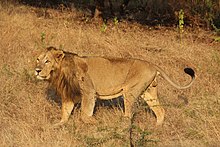





http://www.girnationalpark.in/



Gir Weekend Tour
Gir Weekend Tour will let you enjoy your weekend viewing rare Asiatic Babbar Lions along ……………..

Jeep Safari in Gir
Jeep safari in gir is a must if you want to have some fun in your gir national park explore…………….

Gir Lion Tour
Tour is specially structured to bring you a good time amid the Royal Asiatic Gir Lions…………………

Gir Bird Watching Tour
get in touch with us right today to visit one of so many bird-watching sites in Gir Park………………
Male Asiatic Lion in Sasan Gir
The Asiatic Lion’s
habitat is dry scrub land and open deciduous forest. These lions were
once found across northern Africa, south west Asia and northern Greece.
Now there are only around 411 left in the wild and all of them are in or
around the Gir Forest National Park. The first modern day count of
lions was done by Mark Alexander Wynter-Blyth, the Principal of Rajkumar College, Rajkot
sometime between 1948 to 1963, probably early in his tenure as the
Principal during that period. Even though the Gir Forest is well
protected, there are instances of Asiatic Lions being poached. They have
also been poisoned for attacking livestock. Some of the other threats
include floods, fires and the possibility of epidemics and natural
calamities. Gir nonetheless remains the most promising long term
preserve for them.
The lion breeding programme and lion-counting
| Year | Count | Male:Female:Cub |
| 1968 | 177 | - |
| 1974 | 180 | - |
| 1979 | 261 | 76:100:85 |
| 1984 | 252 | 88:100:64 |
| 1990 | 249 | 82:100:67 |
| 1995 | 265 | 94:100:71 |
| 2000 | 327 | - |
| 2005 | 359 | - |
| 2010 | 411 | 97:162:152 |
The Lion Breeding Programme creates and maintains breeding centres.
It also carries out studies of the behaviour of the Asiatic lions and
also practices artificial insemination. One such centre has been established in the Sakkarbaug Zoo at the district headquarters of Junagadh, which has successfully bred about 180 lions. 126 pure Asiatic lions have been given to zoos in India and abroad.
The census of lions takes place every five years. Previously indirect methods like using pugmarks of the lion were adopted for the count. However, during the census
of April 2005 (which originally was scheduled for 2006, but was
advanced following the reports and controversy over vanishing tigers in
India), “Block-Direct-Total Count” method was employed with the help of
around 1,000 forest officials, experts and volunteers. It means that
only those lions were counted that were “spotted” visually. Use of “live
bait”
(a prey that is alive and used as a bait) for the exercise, though
thought to be a traditional practice, was not used this time. The reason
believed to be behind this is the Gujarat High Court ruling of 2000 against such a use of animals.
Gir Interpretation Zone, Devalia
Gir National Park and Sanctuary does not have a designated area for
tourists. However, to reduce the tourism hazard to the wildlife and to
promote nature education, an Interpretation Zone has been created at
Devalia within the sanctuary. Within its chained fences, it covers all
habitat types and wildlife of Gir with its feeding-cum-living cages for
the carnivores and a double-gate entry system.
vadnagar
RECENT ARCHAEOLOGICAL EXCAVATIONS
The first archaeological excavation
at Vadnagar was carried out by D. Subba Rao and R. N. Mehta of Baroda
State Museum in 1953-54. At the time this writer, who was editor of the
Navin Sarva Vidyalaya High School Journal, worked with D. Subba Rao as a
volunteer for two months. Towards the end of the excavation D. Subba
Rao contributed an article to the School journal as well as delivered a
lecture at the School. At the time he said that the excavation had
yielded enough archaeological evidence to prove that the city existed at
the present site more than 2,500 years ago. Also, he propounded that
the place had Harappan connection. ‘It could have begun as one of the
Harappan settlemets,’ he wondered. However, there has been no conclusive
proof to prove that hypothesis so far. But that kind of proof needs
extensive search and that remains to happen as yet. The recent
excavation on the fringe of the present township, done under the able
leadership of the state chief archaeologist Y. S. Rawat, has provided
ample proof of existence of a thriving centre of Buddhism at Vadnagar
way back in the second century. That draws a dateline of 1,900 years in
the past from today. More extensive diggings might push back that
dateline further back and provide evidence to prove D. Subba Rao’s
hypothesis.
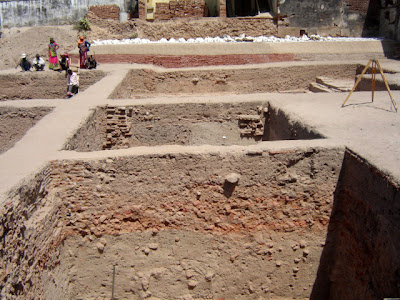
a small-scale excavation, it yielded enough evidence to support the
view that Vadnagar indeed has been a very ancient settlement. A
structure, measuring 55 by 55 feet with 12 residential cells for the
monks, of a Buddhist vihara or monastery, being in use from the
second to the fourth century, has been unearthed. Its identity as a
Buddhist monastery has been authenticated by a team of Japanese
archaeologists that visited the place and examined the evidences
excavated by Y. S. Rawat’s team. The unearthed monastery corroborates
well with the account of the famous Chinese traveller Hsuan-Tsang, who
visited Vadnagar (then known as Anandapur) in the seventh century, that
the city had some ten sangharams with about a thousand Buddhist monks.
present excavation site has yielded more than two thousand artifacts of
various types. These include a Buddha idol, an amphora, figurines, a
crucible, a grinding stone, seals, a terracotta head wearing a turban,
shell bangles, necklace beads, copper and silver coins, and northern
black polished ware with inscriptions.

Did such Buddhist monasteries exist in Vadnagar at the time of Hsuang-Tsang’s visit?
Now,
we have a definitive answer to the question: “Did the Buddhist
monasteries that Hsuang-Tsang saw really exist at Vadnagar?” The recent
excavations have produced concrete evidence in the forms of remains of a
Buddhist Stupa as well as monks’ quarters.

http://www.gujarattourism.com/destination/details/6/53
Vadnagar - Buddhist Monastery
Hub(s) : North Gujarat (Ahmedabad)
General
The recent excavations have brought to light a
Buddhist Monastery belonging to the 2nd-7th century AD, within the
fortified area of Vadnagar. The monastery had two votive stupas and an
open central count yard around which initially nine cells were
constructed. The arrangement of cells around the central courtyard
creates a swastika-like pattern.
Buddhist Antiquities at Vadnagar
The recent excavations have brought to light a Buddhist Monastery
belonging to the 2nd-7th century AD, within the fortified area of
Vadnagar. The monastery had two votive stupas and an open central count
yard around which initially nine cells were constructed. The arrangement
of cells around the central courtyard creates a swastika-like pattern.
How to get there
By road: Mehsana (47km), Ahmedabad (111km). Local Transport: Non-metered auto rickshaws.
By rail: Siddhapur is a railway station on Ahmedabad – New Delhi railway line, 42 km from Vadnagar.
By air: Nearest airport is Ahmedabad (111km).
http://www.discoveredindia.com/gujarat/attractions/archaeological-and-architectures/vadnagar.htm
![]()
Home > Gujarat > Attractions > Archaeological And Architectures > Vadnagar
Vadnagar
A Land of Excavations
Vadnagar is an ancient city of Gujarat with a history that dates
back to 2500 B.C. There have been several excavations at Vadnagar owing
to its historical prominence and these have identified it as home to
the agricultural community about 4500 years ago. This is evident from
the textiles, tools, fragments and pottery unearthed during
archaeological excavations. The area that has been an archaeologist’s
delight, particularly around the Sharmishtha Lake. It is believed that
this lake was one of the several Harappan sites.
Vadnagar also finds a high up mention in the longest epic,
Mahabharata. It was a well known trading and manufacturing centre in the
bygone era and the earliest capital of Gujarat. Also known as City of
Temples, the place has many holy places dedicated to Hindu gods. Two
prominent temple complexes at Vadnagar are Hatkeshwar and Amther Mata.
Both these complexes display detailed carvings and themes in red and
yellow sandstone. There is a Sun temple in Amther Mata.
The communities that settled here left discernible footprints in
the city in the form of tools, ornaments, textiles and fragments seen
even today. Vadnagar is also home to some prominent tourist sites,
which are being heavily promoted by Gujarat tourism.
Vadnagar Sits on a Mound
The base of this city is a mound, which is not natural. The mound
is formed of several layers of ancient civilization. Archaeological
diggings done exposed several houses that were built in the past,
dating back to several thousand years.
Places of Tourist Prominence at Vadnagar
Lake Sharmishtha
When civilization earlier started settling down at this area, it
was on the bank of Kapila river that flows from Aravalli hills. Lake
Sharmishtha’s water source is Kapila river. The settlement became of a
significant size eventually.
Chamatkarpur – The Magical Palace
Vadnagar was called Chamatkarpur 4000 years ago. It got its name
from an incident that cured a king of leprosy after he bathed in Shakti
Tirth. The king repaid the city by revamping it and added temples and
palaces. Chamatkarpur attracted many scholars as it was home to rishi
Yagyavalkya, knower of Vedas.
Saptarshi
Saptarshi or seven sages is located on the banks of a pond attached
to Sharmishtha lake on the eastern side. During erstwhile era, there
were several temples around this lake and it was said that
Yagyavalkya’s ashram existed here.
Toranas
Most exceptional historical monuments of Vadnagar are Toranas or
victory arches. The western shore of Sharmishtha lake has these arches
and are said to be built by Solanki rulers in the tenth century. Red
stone was used for making these Toranas that are over four-stories
tall.
Other Places of Interest
Vadnagar also houses the Tana Riri memorial. These were temples of
Vishnu and Shiva in the seventeenth century. The city also has Nagar
Brahmin havelis.
Useful Information
- Vadnagar lies 111 km from Ahmedabad and 47 km from Mehsana.
- Vadnagar’s nearest railway station is at Siddhapur, which is 42 km
- Nearest airport is 111 km at Ahmedabad.
VADNAGAR - an ancient city
one of the few cities in the world continuously inhabited over a period of more than 2,500 years
VADNAGAR is an ancient city in Gujarat. Its known history goes
back to 2,500 B.C. Archaeological excavations have established that the
settlement of mainly agricultural community . Pottery, textiles fragments, ornaments, tools,
etc., were found during these excavations from various sites around the
present lake Sharmishtha.
THE early settlement was on the bank of river Kapila flowing from the hills of Aravalli. It fed water to a lake, known as Sharmishtha, at the site and the settlement extended around it. Over a period of time the settlement grew into a city of considerable size.
The present city, which appears to be situated on a hill of a height
varying from 7 to 30 meters, is actually sitting on a very large
artificial mound. This mound is created by a number of layers of
buildings built and destroyed in earlier periods. Diggings done for
archaeological excavations or construction of houses in recent times
show no end to these layers till one reaches to the level of farmland
surrounding the city
These layers speak of a very interesting history of several thousand years.

All the same, by the first century the city enjoyed great prosperity,
brought by industry and commerce. It grew in size. It nourished arts
like music, sculpture, architecture, dance, painting, and so on. It
became a hub of cultural activities. Religious and cultural festivities
went on round the year and the place acquired yet another name, Anandapur - the city of joy.
Alexander the Great of Macedon conquered a large part of western India,
including Kutch, in 325 B.C. While returning from India he left many
representatives in India. Many of his soldiers, artisans, entertainers,
and other elements of the army, who were afraid of arduous journey back
home, chose to remain in the conquered land. Some of these Greeks are
believed to have travelled from Kutch to Aanartapur as it was the most
attractive city in the region. Fair skinned Greeks, being city-dwellers
and worshippers of a pantheon of gods and goddesses, might have easily
assimilated with the people of the city. A legend is that the Nagars are
their descendants. The Greek Connection legend has persisted over time.


SEVENTH Century Chinese traveler Hsuan-Tsang visited Vadnagar, then known as Anandapur,
twice on his loop route to central India. In 627 A.D. he began his
journey from the north-east China to far away India and returned to his
native land in 643 A.D. It was a long journey by distance and time. He
kept a detailed chronicle of his travels and gathered a large collection
of books from India. He extensively traveled in Western India
comprising of present-day Rajasthan, Gujarat, Madhya Pradesh, and
Maharashtra. Among the cities he visited were Anandapur, Vallabhi,
Ujjain, and Bharuch.
Hsuan-Tsang has written a separate chapter on Anandapur. He writes about it:
circuit, the capital about 20. The population is dense; the
establishments rich. There is no chief ruler, but it is an appanage of
Malava. The produce, climate, and literature and laws are the same as
those of Malava. There are some ten sangharamas with less than 1000
priests; they study the Little Vehicle of the Sammatiya school. There
are several tens of Deva temples, and sectaries of different kinds
frequent them. ”Going west from Valabhi 500 li or so, we come to the country of Su-la-ch’a (Surashtra).”

